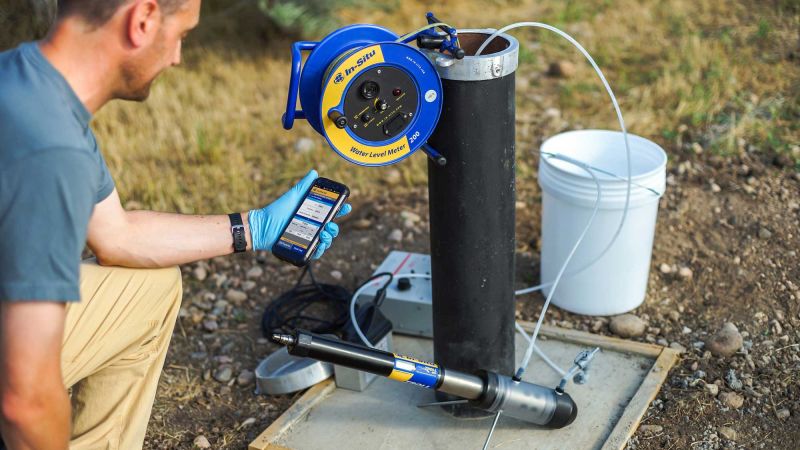Low-Flow Sampling: An Interview with Senior Application Development Manager Adam Hobson
Published on by Marcus Miller, Digital Marketing Manager at In-Situ in Academic
Introduction
We sat down with our senior application development manager for groundwater, Adam Hobson, to talk about the benefits and challenges of low-flow sampling and how In-Situ instruments and software can help.
In-Situ: First things first – why might someone need to take a groundwater sample?
Adam: Because not all water chemistry can be determined by field sensors. Groundwater sampling involves removing a volume of water from a well and analyzing it for the parameters you’re interested in. You can send that to a laboratory for analysis, or use other techniques, like a portable test kit. Groundwater samples may be taken to see if the water is safe to drink or use, or to monitor how industrial activity or other events have impacted the aquifer.
In-Situ: So, low-flow sampling is one way to do that. Can you briefly describe what that process looks like?
Adam: The goal of any groundwater sampling event is to collect a sample that is representative of the water-bearing formation. To do this, you should minimize the disturbance of the well. Basically, you pump groundwater at a very low rate–less than one liter per minute–so you can purge just the sampling zone, not the entire well.
To do that, you first adjust the flow rate of the pump to minimize the drawdown to less than about 0.1 feet. Once the flow rate and water level are stabilized, you can check the turbidity and temperature of discharge water to make sure they aren’t changing much, which indicates minimal disturbance.
Once those are stabilized, you can measure changes in other water quality parameters, such as specific conductivity, pH, ORP and dissolved oxygen. Once those stabilize, you take your sample.
In-Situ: What are the advantages of low flow over other methods?
Adam: A lot of people only know the traditional way of doing [groundwater sampling], which is
READ MORE
Taxonomy
- Groundwater
- Aquifer
- Aquifer Recharge
- Groundwater Recharge
- Aquifer Recharge
- Groundwater Assessment
- Groundwater Modeling
- Groundwater Pollution
- Groundwater Prospecting
- Groundwater Mapping
- Surface-Groundwater Interaction
- Groundwater Salinisation
- Aquifer Treatment
- Groundwater Quality & Quantity
- Groundwater Resource
- Public Water System and Groundwater Issues
- Central Ground Water Board
- Groundwater Surveys and Development
- Groundwater flux
- Managed Aquifer Recharge
- Groundwater monitoring and assessments
- Groundwater Remediation
- Groundwater Data Scientist
